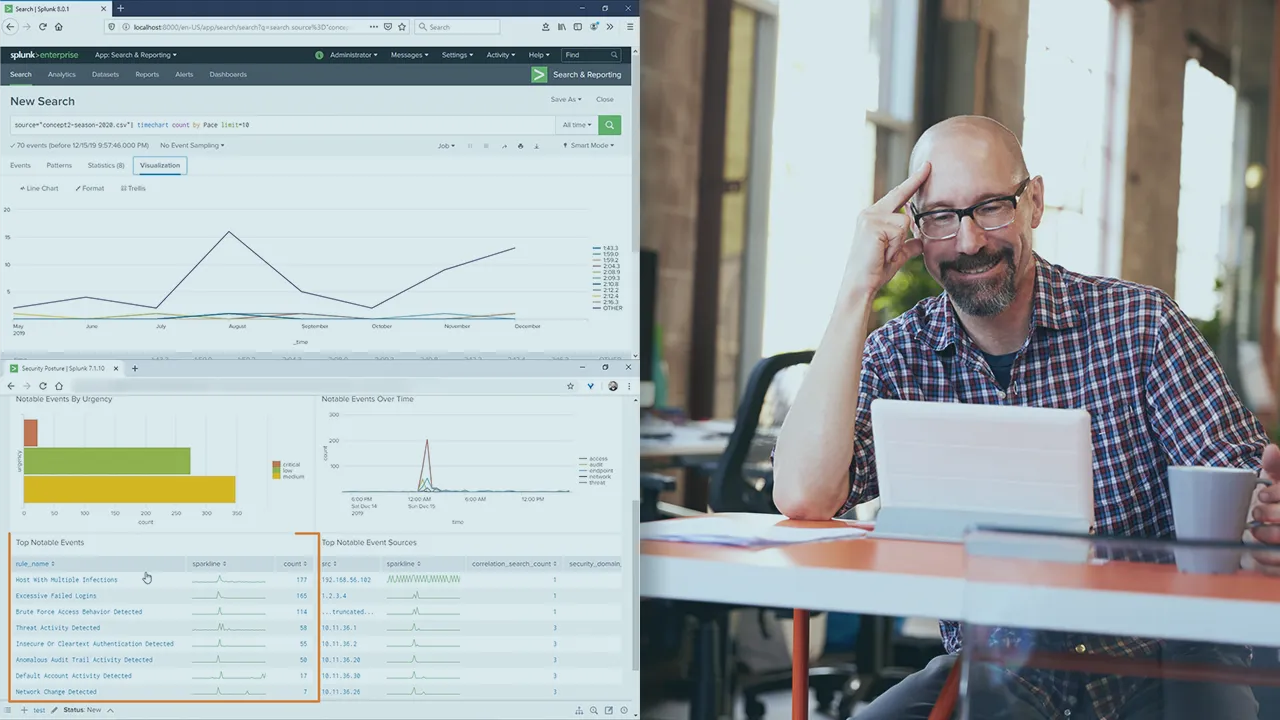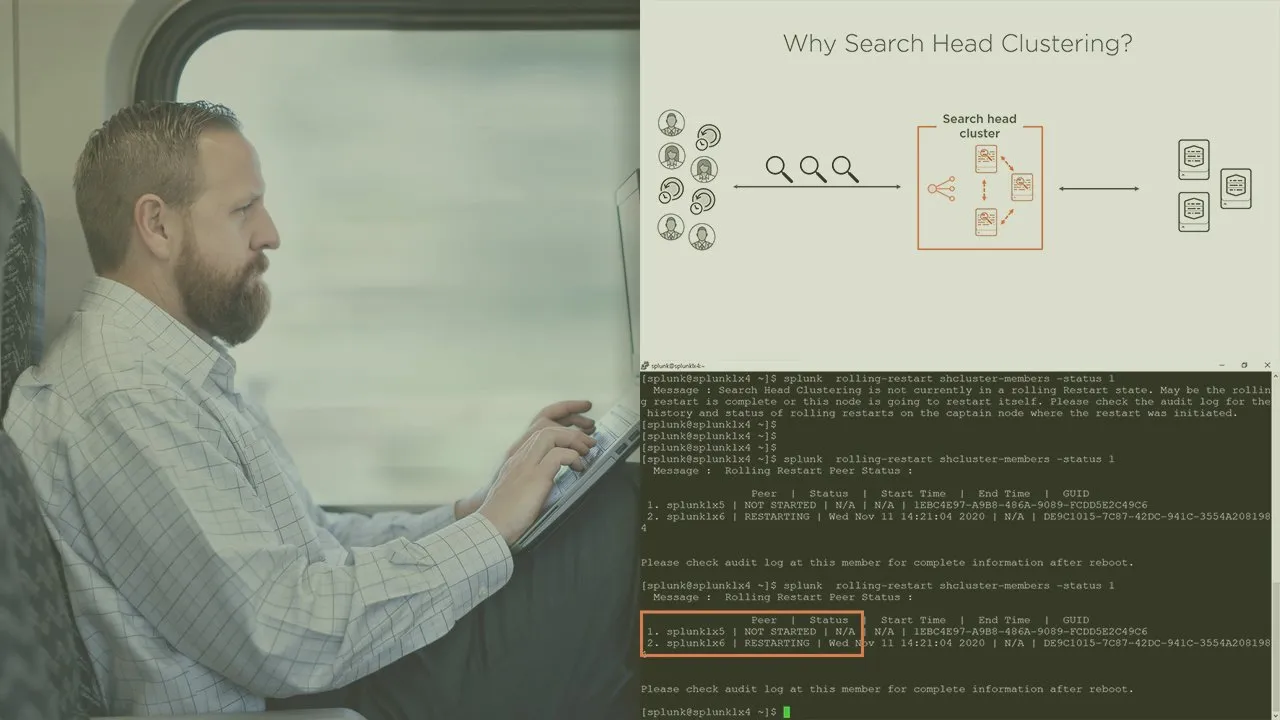
Introduction to Splunk 
ADVERTISEMENT
Course Feature
![]() Cost:
Cost:
Paid
![]() Provider:
Provider:
Cybrary
![]() Certificate:
Certificate:
Paid Certification
![]() Language:
Language:
English
![]() Start Date:
Start Date:
On-Demand
Course Overview
❗The content presented here is sourced directly from Cybrary platform. For comprehensive course details, including enrollment information, simply click on the 'Go to class' link on our website.
Updated in [May 19th, 2023]
Cybrary’s Introduction to Splunk training will provide you with the knowledge and skills necessary to use the Splunk platform. Through this course, you will learn the basics of Splunk and advance to topics including onboarding data and alerts. You will also learn how to install a trial version of Splunk Enterprise, as well as forwarders to get data from different kinds of hosts, and then work with the data retrieved through crafting Splunk searches, alerts, reports, and dashboards. Additionally, the course will cover career paths, tips and tricks, and further areas of study. Upon completion of the course, learners will have earned 2 CEU/CPE and will receive a Certificate of Completion.
[Applications]
After completing this course, users will be able to apply their knowledge of Splunk to their own IT infrastructure. They will be able to install Splunk Enterprise and forwarders, onboard data, create searches, alerts, reports, and dashboards, and use Splunk to troubleshoot proactively. Additionally, users will be able to use Splunk to organize existing data and create attractive and organized graphs and charts.
[Career Paths]
Career Paths
1. Splunk Administrator: A Splunk Administrator is responsible for the installation, configuration, and maintenance of Splunk software. They are also responsible for creating and managing Splunk users, setting up data inputs, and creating dashboards and reports. This role is in high demand and is expected to grow as more organizations adopt Splunk for their IT operations.
2. Splunk Developer: A Splunk Developer is responsible for developing and customizing Splunk applications. They are also responsible for creating custom scripts, developing custom dashboards, and creating custom reports. This role is also in high demand and is expected to grow as more organizations adopt Splunk for their IT operations.
3. Splunk Consultant: A Splunk Consultant is responsible for providing advice and guidance to organizations on how to best use Splunk for their IT operations. They are also responsible for helping organizations to develop and implement Splunk solutions. This role is also in high demand and is expected to grow as more organizations adopt Splunk for their IT operations.
4. Splunk Architect: A Splunk Architect is responsible for designing and implementing Splunk solutions for organizations. They are also responsible for developing and maintaining Splunk architectures, as well as providing guidance and advice on best practices. This role is also in high demand and is expected to grow as more organizations adopt Splunk for their IT operations.
[Education Paths]
Recommended Degree Paths:
1. Bachelor of Science in Computer Science: This degree program provides students with a comprehensive understanding of computer science principles and technologies. Students will learn about programming languages, software engineering, operating systems, computer networks, and more. This degree is ideal for those who want to pursue a career in software development, data science, or IT management.
2. Master of Science in Data Science: This degree program focuses on the application of data science principles and techniques to solve real-world problems. Students will learn about data mining, machine learning, artificial intelligence, and more. This degree is ideal for those who want to pursue a career in data analytics, data engineering, or data visualization.
3. Master of Science in Cybersecurity: This degree program provides students with a comprehensive understanding of cybersecurity principles and technologies. Students will learn about network security, cryptography, digital forensics, and more. This degree is ideal for those who want to pursue a career in cybersecurity, information security, or risk management.
4. Doctor of Philosophy in Computer Science: This degree program provides students with an in-depth understanding of computer science principles and technologies. Students will learn about programming languages, software engineering, operating systems, computer networks, and more. This degree is ideal for those who want to pursue a career in research, academia, or industry.
Developing Trends:
1. Bachelor of Science in Computer Science: With the increasing demand for software developers, data scientists, and IT professionals, the Bachelor of Science in Computer Science degree is becoming more popular. This degree is also becoming more specialized, with courses focusing on topics such as artificial intelligence, machine learning, and data science.
2. Master of Science in Data Science: With the increasing demand for data analysts, data engineers, and data visualizers, the Master of Science in Data Science degree is becoming more popular. This degree is also becoming more specialized, with courses focusing on topics such as big data, predictive analytics, and natural language processing.
3. Master of Science in Cybersecurity: With the increasing demand for cybersecurity professionals, the Master of Science in Cybersecurity degree is becoming more popular. This degree is also becoming more specialized, with courses focusing on topics such as malware analysis, digital forensics, and secure coding.
4. Doctor of Philosophy in Computer Science: With the increasing demand for computer science researchers, the Doctor of Philosophy in Computer Science degree is becoming more popular. This degree is also becoming more specialized, with courses focusing on topics such as machine learning, artificial intelligence, and distributed systems.
Course Syllabus
Module 1: Introduction
1.1 WelcomeModule 2: Splunk Products, Resources, and Certifications
1.2 What is Splunk?Module 3: Setting Up Splunk
1.3 Splunk and Your CareerModule 4: Data
2.1 Splunk Products, Resources, and CertificationsModule 5: Using Data
2.2 Splunk WebsiteModule 6: Conclusion
2.3 Splunk ProductsCourse Assessment
3.1 Setting Up SplunkCourse Provider

Provider Cybrary's Stats at AZClass
Discussion and Reviews
0.0 (Based on 0 reviews)
Explore Similar Online Courses

The Complete Google AdWords Course: Beginner to Advanced!

Python for Everybody - Exploring Information

Python for Informatics: Exploring Information

Social Network Analysis

Introduction to Systematic Review and Meta-Analysis

The Analytics Edge

DCO042 - Python For Informatics

Causal Diagrams: Draw Your Assumptions Before Your Conclusions

Whole genome sequencing of bacterial genomes - tools and applications

Splunk: The Big Picture

Creating Workflow Actions in Splunk


Start your review of Introduction to Splunk